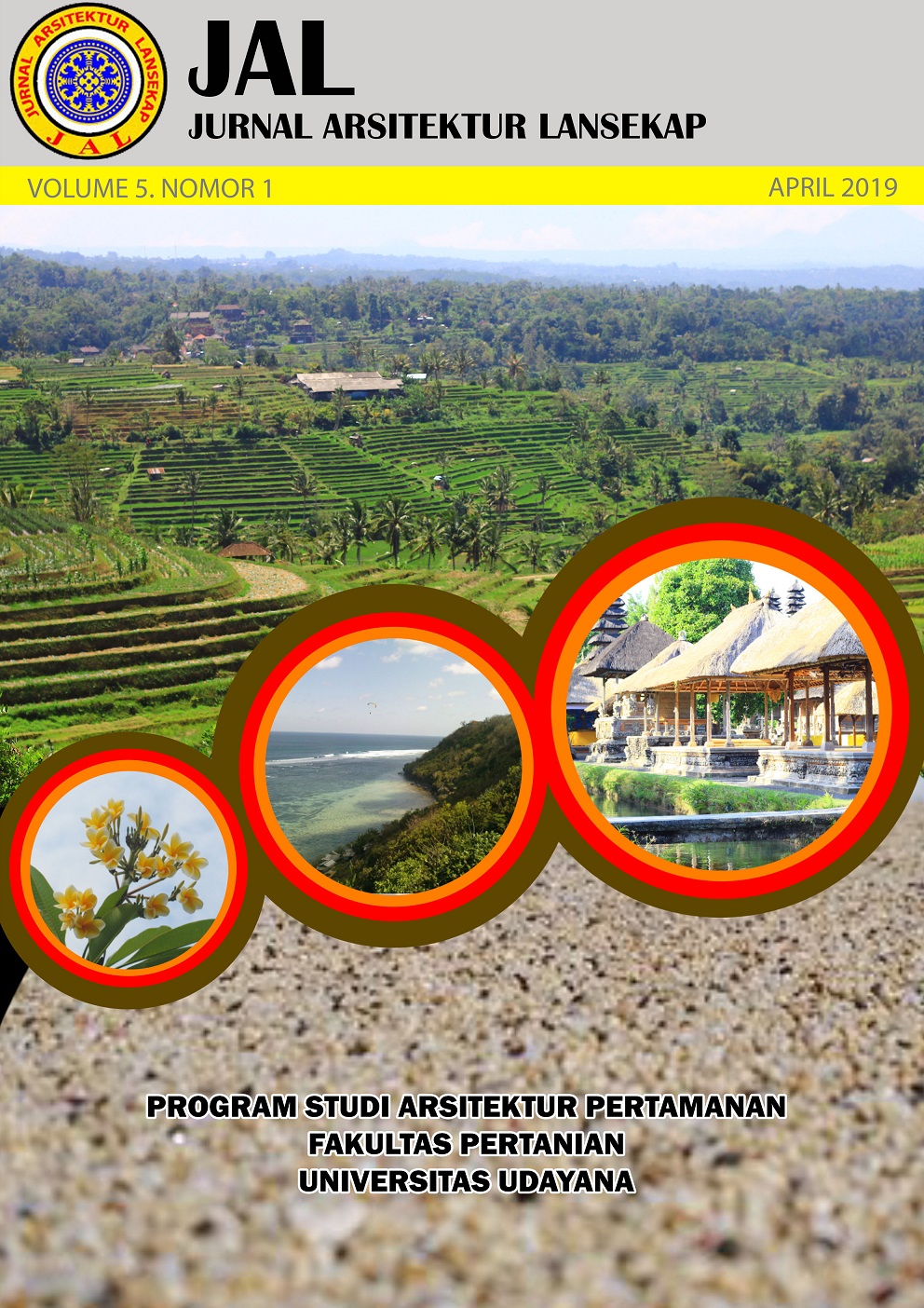Identifikasi dan model ruang terbuka hijau sebagai ruang evakuasi bencana alam gempa bumi berbasis SIG di kawasan Sanur, Denpasar, Bali
Abstract
Identification and model on green open space as evacuation area of earthquake at Sanur, South Denpasar, Bali. Bali Island is one of Indonesia's seismotectonics as it is passed through the Mediterranean mountain range and the subduction zone between the Eurasian Plate and the Indo-Australian Plate. The southern area of Bali is vulnerable to earthquake and one of the most vulnerable to the earthquake is Sanur. Sanur area has an area of 10,57 km² or 1.057 hectares with a population of 28.527 inhabitants. Therefore, earthquake mitigation such as physical mitigation is to utilize green open space as an evacuation area is considered to be important. The purpose of this research is to identify the suitability of green open space as an evacuation area and to determine the green evacuation open space concept model. This research used satellite image interpretation and field survey methode. The data used is data of the earthquake center point throughout in Sanur along with potential tsunami risk map, green open space map and accessibility map. The parameters used were green open space width of at least 500 m², types of green open space, accessibility, and potential earthquake and tsunami. Result showed that the green open space which suitable as an evacuation area was about 292 hectar and not suitable is 93 hectar. Furtheremore, the suitable green open space evacuation map was generated into two evacuation space concept. There were micro evacuation space and macro evacuation space. The micro evacuation space focuses on individual rescue while the macro evacuation space focuses on mass rescue.
Downloads
References
Badan Meteorologi Klimatologi dan Geofisika. 2017. Gempa Bumi. http://balai3.denpasar.bmkg.go.id/tentang-gempa. (tersedia dalam jaringan pada 20 Maret 2017)
Badan Nasional Penanggulangan Bencana. 2017. Tanggap Tangkas Tangguh Menghadapi Bencana. BNPB, Jakarta
Badan Pusat Statistik Denpasar. 2017. Kepadatan Penduduk 2017. BPS, Bali
Kelompok Kerja Perencanaan Evakuasi Untuk Sanur. 2010. Rencana Evakuasi Tsunami Untuk Sanur. Denpasar
Kemenpu (Kementrian Pekerjaan Umum). 1998. Persyaratan Teknis Aksesibilitas pada Bangunan Umum dan Lingkungan. Mentri Pekerjaan Umum. Jakarta
Sagala Saut, Sari, Saraswati. 2013. Analisis Spasial Ketersediaan Ruang Terbuka Publik Pada Pemukiman Padat untuk Evakuasi Pada Gempa Susulan, Studi Kasus: Kelurahan Suhahaji Bandung. Forum Geografi, 27(2):123-134
Sucipto Daryono. 2010. Zona Rawan Gempa Daerah Bali: Tinjauan Seismisitas dan Data Historis. https://www.facebook.com/notes/wwwbmkggoid/zona-rawan-gempa-daerah-bali-tinjauan-seismisitas-dan-data-historis-oleh-daryono/398395940788/ (tersedia dalam jaringan pada 20 Maret 2017)

This work is licensed under a Creative Commons Attribution 4.0 International License.
An author who publishes in the Jurnal Arsitektur Lansekap (JAL) agrees to the following terms:
- Author retains the copyright and grants the journal the right of first publication of the work simultaneously licensed under the Creative Commons Attribution-ShareAlike 4.0 License that allows others to share the work with an acknowledgement of the work's authorship and initial publication in this journal
- Author is able to enter into separate, additional contractual arrangements for the non-exclusive distribution of the journal's published version of the work (e.g., post it to an institutional repository or publish it in a book) with the acknowledgement of its initial publication in this journal.
- Author is permitted and encouraged to post his/her work online (e.g., in institutional repositories or on their website) prior to and during the submission process, as it can lead to productive exchanges, as well as earlier and greater citation of the published work (See The Effect of Open Access).
Read more about the Creative Commons Attribution-ShareAlike 4.0 Licence here: https://creativecommons.org/licenses/by-sa/4.0/.







